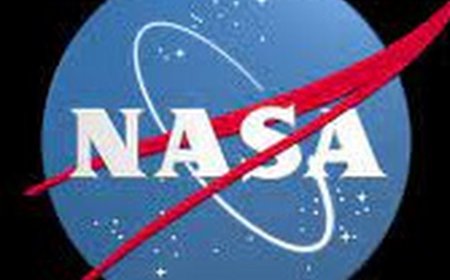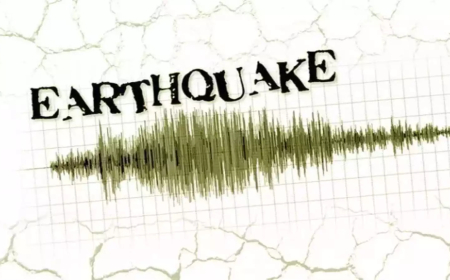Axiom-4 Mission Delay: Reason Behind the Technical Leak and How Space Launch Windows Are Scheduled
Learn why the Axiom-4 mission faced a delay due to a technical leak and explore how exact space launch windows are selected. Understand the science behind space mission scheduling.

Axiom-4 Launch Delay: What Caused the Hold-Up and How Space Agencies Choose Perfect Launch Times
The Axiom-4 mission, a significant event in private space exploration, recently experienced a delay — not due to weather or scheduling issues but because of a technical leak. While delays in space missions are not uncommon, the reasons behind them often raise curiosity among space enthusiasts and the general public alike.
In this article, we’ll break down the Axiom-4 delay in simple terms and explain the concept of launch windows — the critical time slots when space agencies decide to send rockets soaring into the sky. This breakdown is presented point by point to make it easier and more enjoyable to understand.
What Is Axiom-4?
-
Axiom-4 is a privately organized crewed space mission, the fourth in a series operated by Axiom Space in collaboration with NASA.
-
It aims to carry international astronauts to the International Space Station (ISS) aboard a SpaceX Crew Dragon.
-
The mission promotes commercial space travel, research, and zero-gravity science experiments.
What Caused the Axiom-4 Mission to Be Delayed?
The primary reason for the delay was a leak detected in the spacecraft’s ground systems. Let’s go through this step by step:
1. Detection of the Leak
-
A fluid leak was discovered during pre-launch checks.
-
These checks are part of regular protocol to ensure astronaut and spacecraft safety.
-
The leak involved systems responsible for pressurizing or cooling various components on the rocket.
2. Nature of the Leak
-
It was not inside the spacecraft itself but part of ground support equipment (GSE).
-
This equipment includes fueling lines, pressure regulators, and temperature control systems.
3. Why the Delay Was Necessary
-
Launching with even a minor leak can pose serious risks such as:
-
Pressure imbalance
-
Cooling failure
-
Component overheating
-
-
NASA and Axiom took a cautious approach and postponed the launch to fix the issue thoroughly.
4. Response from Axiom Space
-
Axiom Space released a statement emphasizing that safety is the top priority.
-
Engineers worked swiftly to identify and fix the faulty components.
-
A new launch date was planned after confirming all systems were fully operational.
What Are Space Launch Windows and Why Are They So Crucial?
A launch window is the exact period when a rocket can take off for the mission to succeed. If missed, the mission must wait for the next available opportunity — sometimes hours, sometimes days later.
Here’s why launch windows matter:
1. Earth’s Rotation and Orbit Alignment
-
The Earth rotates at high speed, and space targets (like the ISS) are constantly moving.
-
Launch windows must align perfectly with the orbit of the ISS so the spacecraft can dock easily.
2. Fuel Efficiency
-
Launching during the right window allows the rocket to use less fuel.
-
If the timing is off, it may need more fuel to make trajectory corrections.
3. Safety Factors
-
Launch windows avoid potential risks such as:
-
Bad weather conditions
-
Solar flares
-
Debris fields in space
-
4. Backup Windows
-
Most missions plan multiple backup windows.
-
These are alternative dates and times prepared in case the primary attempt fails.
How Are Launch Windows Calculated?
Calculating the perfect time to launch is a mix of physics, astronomy, and precision planning:
-
Track the Space Target
-
In this case, engineers track the International Space Station’s orbit.
-
-
Sync with Orbital Plane
-
The rocket must enter the same orbital path as the ISS to ensure successful docking.
-
-
Account for Local Conditions
-
Weather forecasts at the launch site play a big role.
-
Conditions like wind, rain, lightning, or cloud coverage can delay liftoff.
-
-
Consider Astronaut Health and Readiness
-
Astronaut physical readiness is checked.
-
Emergency plans and rescue teams must also be on standby during launch.
-
-
International Collaboration
-
With global space partnerships, launch windows are coordinated with NASA, SpaceX, and international mission control centers.
-
Timeline of Axiom-4 Mission Planning and Delay
| Date | Event |
|---|---|
| Original Launch Date | Scheduled for early June 2025 |
| Leak Discovered | During final ground checks, just days before launch |
| Delay Confirmed | Axiom Space issued official delay notice |
| Technical Fixes | Ground systems leak isolated and corrected |
| New Launch Date | Rescheduled for a later date, window recalculated |
Who’s on Board Axiom-4?
The Axiom-4 crew includes astronauts from different nations, representing global cooperation in space. The team will:
-
Stay aboard the ISS for approximately 10–14 days
-
Conduct scientific experiments in microgravity
-
Promote educational outreach and cross-national research
Why Private Space Missions Like Axiom Matter
-
Commercial space missions like Axiom-4 help reduce dependency on national agencies.
-
They make space more accessible to researchers, tourists, and smaller countries.
-
Such missions stimulate innovation, create space jobs, and support deep space research.
Lessons from the Axiom-4 Delay
While delays might seem like setbacks, they reflect the caution and precision involved in space travel:
-
Better to wait and verify than to risk millions of dollars — and more importantly — human lives.
-
Even the tiniest leak can turn dangerous in the vacuum of space.
-
The delay allowed engineers to test all systems thoroughly, avoiding mission failure.
The Road Ahead: What Happens Next?
-
Launch Window Reassessment
-
The team recalculated new launch slots that match ISS’s current orbit.
-
-
Crew Briefings
-
Astronauts undergo final training updates and simulations before the new launch.
-
-
Public Engagement
-
Axiom Space will likely offer live coverage, expert panels, and behind-the-scenes content for fans and educators.
-
-
Mission Execution
-
Once launched, the spacecraft will travel for approx. 24 hours before reaching the ISS.
-
Final Thoughts: Axiom-4 Proves Why Every Detail Matters in Space Travel
The Axiom-4 delay shows us just how complex, detailed, and safety-oriented modern space travel is. A simple leak may sound like a minor issue, but in the world of space science, there is no such thing as a “small problem.”
From calculating launch windows to ensuring every seal is tight and every wire is in place, missions like Axiom-4 demonstrate the marriage of science, planning, and precision.
Stay tuned for the rescheduled liftoff — and watch history being made, again.
For more updates on Axiom-4 and other major space missions, follow this space.
What's Your Reaction?

























































